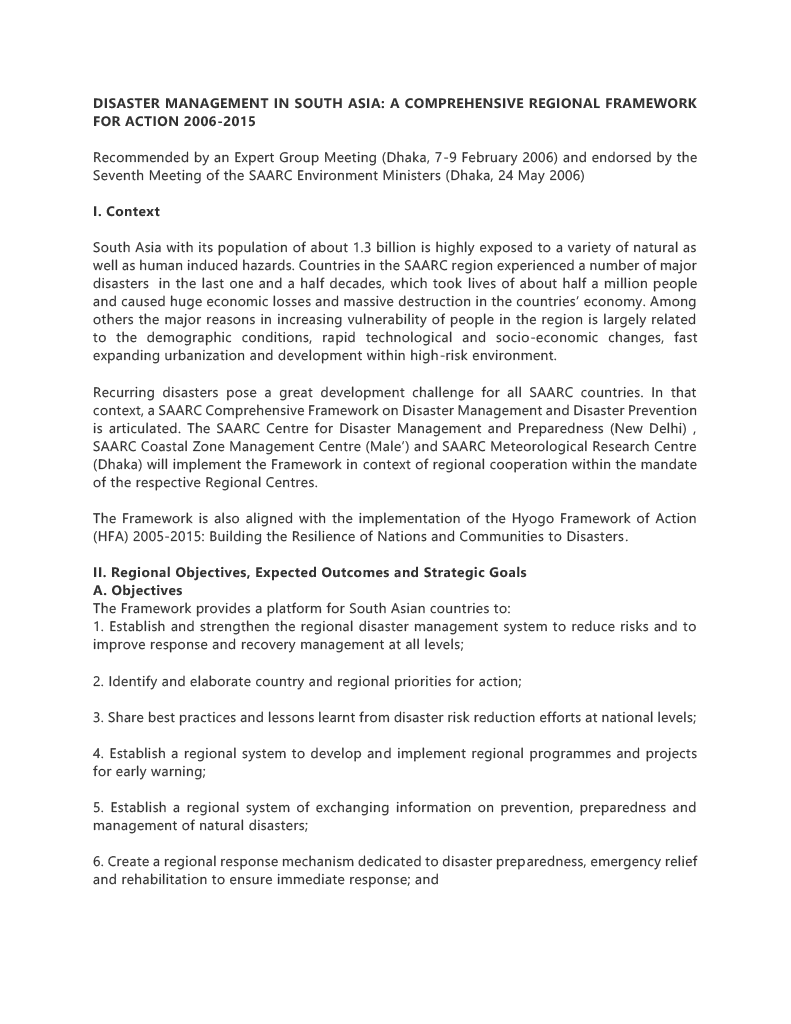The Disaster Management in South Asia: A Comprehensive Regional Framework for Action 2006-2015 presents a strategic plan developed in 2006 and endorsed by the SAARC Environment Ministers. South Asia, with a population of 1.3 billion, faces significant exposure to natural and human-induced hazards, resulting in major disasters. The framework addresses vulnerabilities linked to demographic conditions, technological changes, and rapid urbanization.
Aligned with the Hyogo Framework of Action 2005-2015, the plan aims to establish and strengthen a disaster management system, identify priorities, share best practices, and create regional early warning and information exchange systems. The expected outcomes include an efficient disaster management system, resilient communities, enhanced coordination, and improved information systems.
Strategic goals involve professionalizing the disaster management system, mainstreaming risk reduction, empowering communities, and expanding risk reduction programs. Priorities for action from 2006-2015 emphasize risk reduction strategies, establishing response mechanisms, creating networks, implementing training programs, applying ICT, and developing monitoring mechanisms.
Implementation involves a multi-sectoral approach with stakeholders, including member states, regional organizations, civil society, the scientific community, and the private sector. Member states are urged to integrate disaster risk reduction into sustainable development policies. Specific considerations include developing national plans of action and implementing regional cooperation components through concerned mechanisms.
The Framework was recommended by an Expert Group Meeting in Dhaka from 7-9 February 2006 and endorsed by the Seventh Meeting of the South Asian Association for Regional Cooperation (SAARC) Environment Ministers on 24 May 2006.
Help SAR-Climate keep this document page accurate and updated by suggesting an edit or any corrections here.

